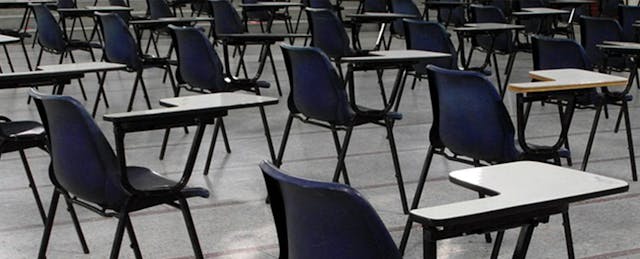Based on the research and current trends across the country, it is clear that the trajectory of education is headed towards student agency and personalization. For an individual school or district looking to make inroads in these areas, the breadth and depth of a personalized learning program is ultimately dependent on its vision, infrastructure, and capacity for sustainability. This is no more evident then in the schools I serve in the city of Detroit with Matchbook Learning, where a turnaround is doomed to failure without these pillars. Yet, a top-performing institution can quickly fall into complacency without addressing the push toward centering the classroom around the student.
The following guide (along with a recent white paper release on blended human capital!) has been designed to start the conversation for among your leadership team. A careful analysis of the assets and needs for a school or district can yield a strategic plan for the implementation of a student-centered environment.
Existing Infrastructure
Your technology capacity will ultimately determine the level of personalization that can be implemented in your building. Which best describes your situation?
1:1 devices: In this scenario, a fully personalized environment is possible with the right amount of support and expectations. When every child has a device, every child can have a personalized learning plan. This can be achieved by exploring no-cost solutions such as teachers designing their own web pages as a repository for individualized assignments and assessments. More costly avenues might include adaptive software or digital platforms that house student play lists.
1-2 computer labs: In this scenario, consider rotating classes to the lab once a week for Math instruction and once a week for English/Language Arts instruction. This will allow both the students and teachers to explore the realm of personalization in a non-threatening manner. While in the lab, each child can work on individualized assignments and assessments. This can be achieved by exploring no-cost solutions such as Khan Academy or LearnZillion or license-based adaptive programs like Apex Learning or PLATO.
Combination: With a combination of computer labs and 3-5 devices per classroom, use the previous structure for weekly rotations. In addition to the lab time, leverage the devices you have in the classroom for small group instruction or rotate students through a device station to work on individualized assignments and assessments.
If infrastructure is hindering your vision for student agency, consider exploring grants, bond issues, or philanthropic ventures.
Vision for Scaling
Every child deserves a personalized experience, but full immersion into a program may not fit your vision for implementation. How do you want to scale?
A pilot of 2-3 classrooms: Identify teachers who have the capacity and enthusiasm for technology and differentiation. Those who naturally integrate these elements into their daily instruction will make the transition to personalization quickly. Be sure that the teachers you select are also considered to be influencers in their building.
A grade-level cohort: Older students make the transition to personalized learning more quickly than early elementary children due to their ability to manipulate technology and their innate desire for agency. Consider looking for your pilot group in 4th grade and above. Also identify which cohort has teachers who possess the capacity to innovate. Find your risk-takers.
School-wide: Full implementation of a personalized program, regardless of your student to device ratio, will require a high degree of coach-ability and grit in your staff. It will be vital that you equip your teachers with sustained professional development, as well as 1-2 coaches to continually build their capacity. Be prepared for resistance and meet it head-on with support and communication of expectations.
Sustainability and Growth
Learning will continue to become more personalized, so it is important that your program grows and thrives at the rate your infrastructure and staff can handle. Keep these factors in mind in order to achieve a high degree of success with your implementation:
Clear expectations: A personalized environment always runs the risk of becoming chaotic and devoid of rigor if parameters are not set. Students and teachers need to know what is expected of them in a lab rotation or 1:1 classroom. Expectations may include student achievement growth, an increase in student independence, or noticeably higher engagement and critical thinking activities. Make sure these are developed with your stakeholders and communicated regularly.
Staff capacity: Students are not the only ones who deserve personalized learning. Professional development opportunities should be tailored to the individual needs of teachers. Those who are meeting or exceeding expectations can be developed into teacher-leaders and assist with growing your program. Those who are struggling can be developed using strategies that speak to their learning styles. The fostering of continuous learning should apply to the entire school community.
Scaling up: If your infrastructure only supports 1 computer lab, consider designing proof points and a plan to increase the amount of devices as your school grows in its understanding of personalization. Schools already at 1:1 may choose to focus on enhancing their software, platforms, or play lists for maximum rigor and engagement. The point is to continually review your existing implementation strategy and find ways to refine it to match your vision.
Just as the one-size-fits-all model of education no longer addresses the needs of today’s students, implementing a personalized program for your school or district must also be carefully tailored to what you have, what you want, who you have on board, and how quickly you aim to fully realize a student-centered environment. Get the conversation started.
Nichole Husa is a Blended Instruction Specialist with Matchbook Learning, a charter management organization that aims to improve education by strengthening the country's lowest performing schools.


